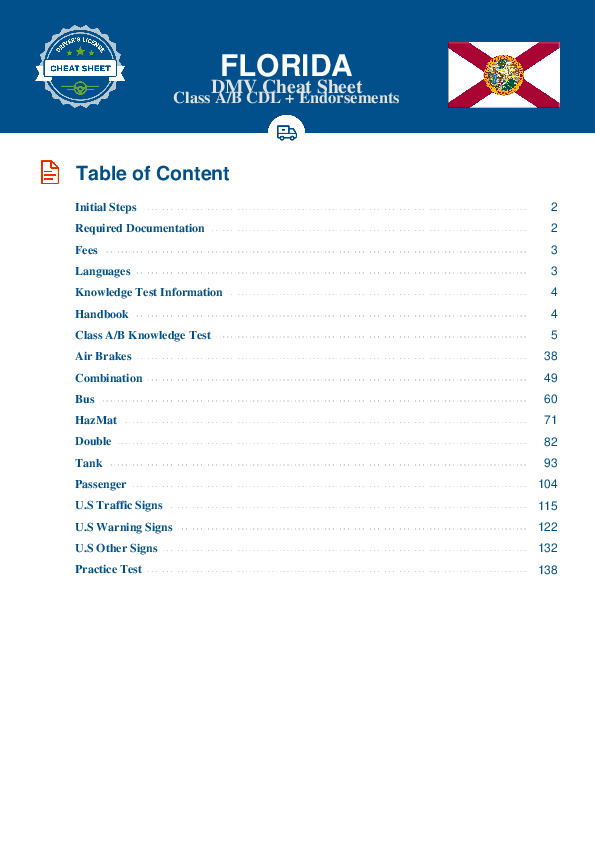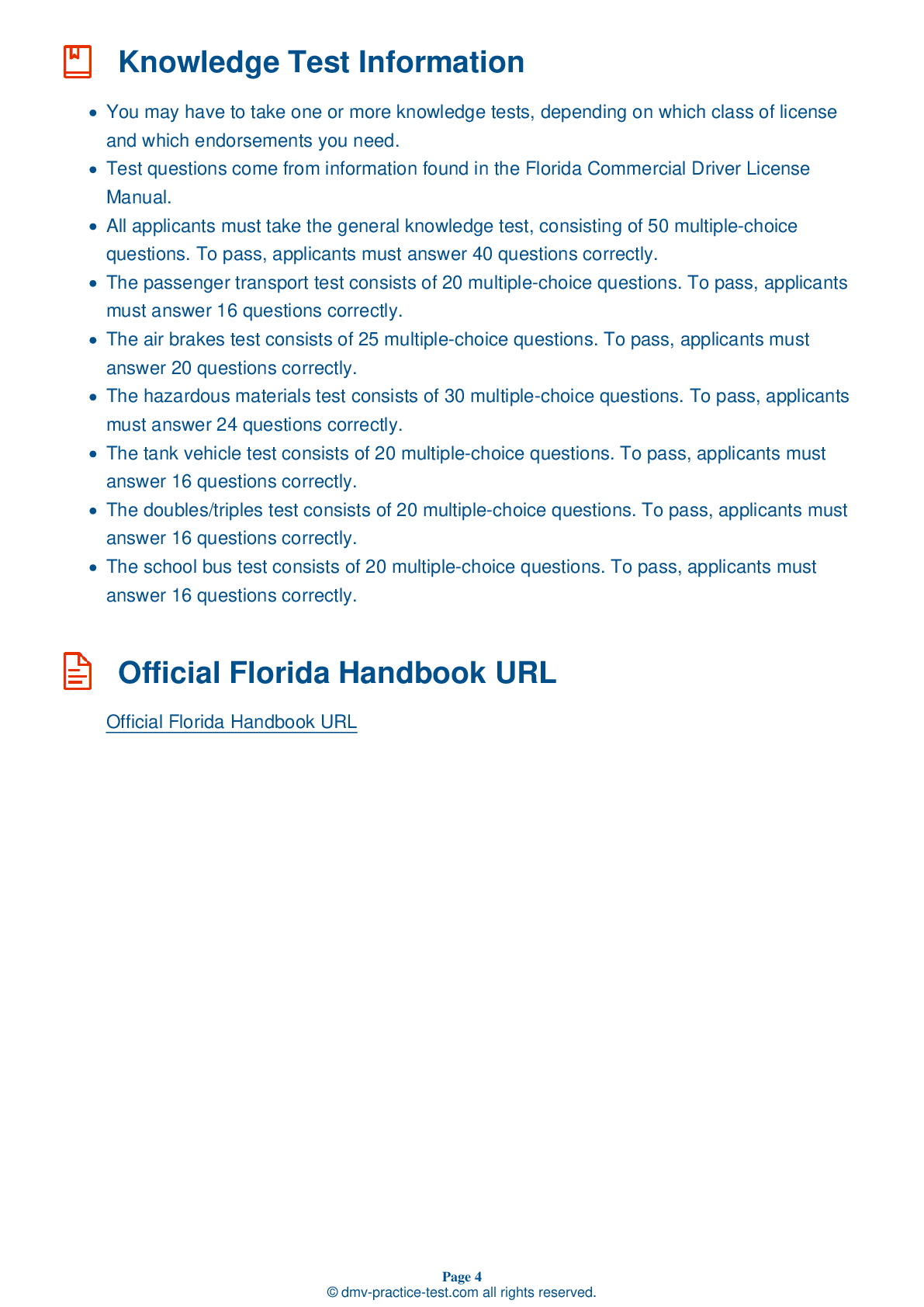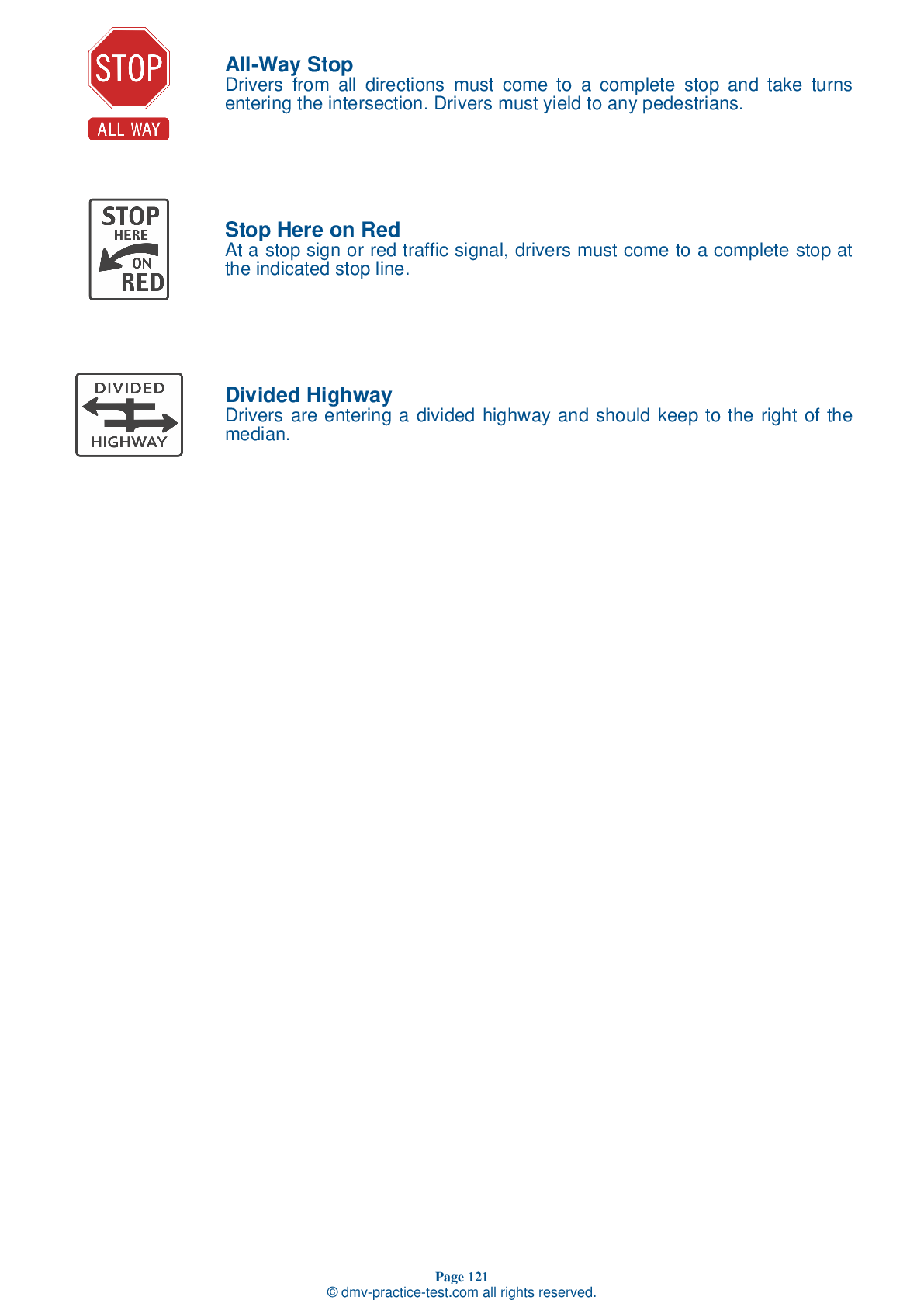Combination Vehicles Practice Test | Florida 2025 #2 Page 2 of 3
Train for FREE online with our Florida CDL combination vehicle test. The official exam test consists of several obligatory parts, with all of them checking your knowledge of different blocks of road rules. If you need to obtain a FL combination license in 2025, practice as much as possible. Free sample tests published on our website will help you check and improve your knowledge and boost your grades. Please bear in mind that DMV requirements for issuing a combination license may vary from state to state.
8 . Pull out the trailer air supply control to test:
Be sure to test the trailer emergency brakes before beginning a trip. After ensuring that the trailer rolls freely, you can test the emergency brakes by pulling out the trailer air supply control, or placing it in the "emergency" position. Pull forward slightly with the tractor and make sure the trailer does not move.
9 . If oil and water build up in your vehicle's air tanks, the brakes:
Air tanks should be drained daily to remove water and oil buildup. An excess of oil and water in the air tanks can interfere with proper brake function.
10 . What is off-tracking?
When a vehicle goes around a corner, the rear wheels follow a different path than the front wheels. This is known as off-tracking, or "cheating."
11 . Large combination vehicles take the longest amount of time to stop:
Large combination vehicles take longer to stop when they are empty than when they are loaded. The decreased weight causes a vehicle's wheels to have decreased traction on the surface of the road.
12 . Rollovers are most likely to happen when:
Rollovers happen when an operator turns too fast. Drivers should be sure to slow down before entering turns and curves, especially when transporting a fully-loaded rig.
13 . Which type of vehicle is most prone to the “crack-the-whip” effect?
Triple combination trailers are most vulnerable to the "crack-the-whip" effect.
14 . The best way to recognize that your trailer has begun to skid is by:
The earliest and best way to recognize the beginnings of a trailer skid is by seeing the trailer veer off-course in your mirrors.
See the exact questions that will be on the 2025 Florida DMV exam.
99.2% of people who use the cheat sheet pass the FIRST TIME
Lillian MCcranie explains how our CDL study guide was helpful in passing the exam and recommends it to everyone.
Cameron tells us how he purchased the CDL exam, and found it to be a useful tool which helped him pass the exam and find a job.



